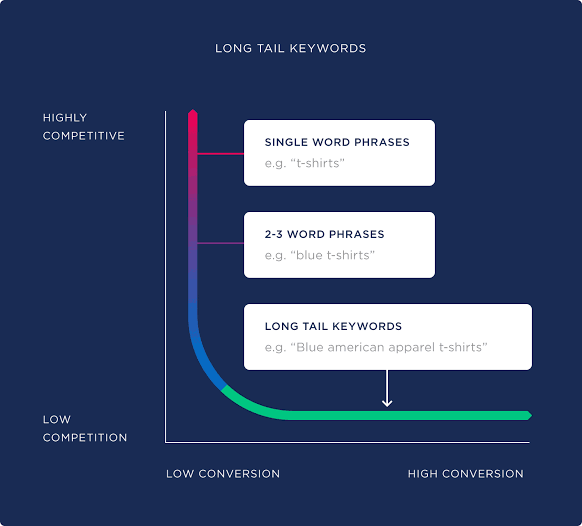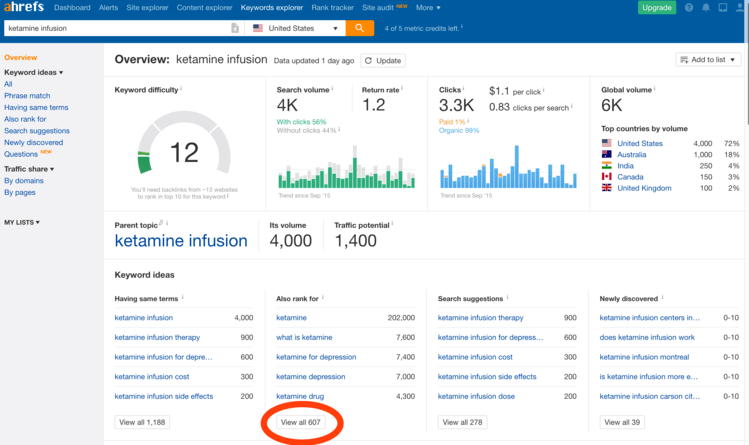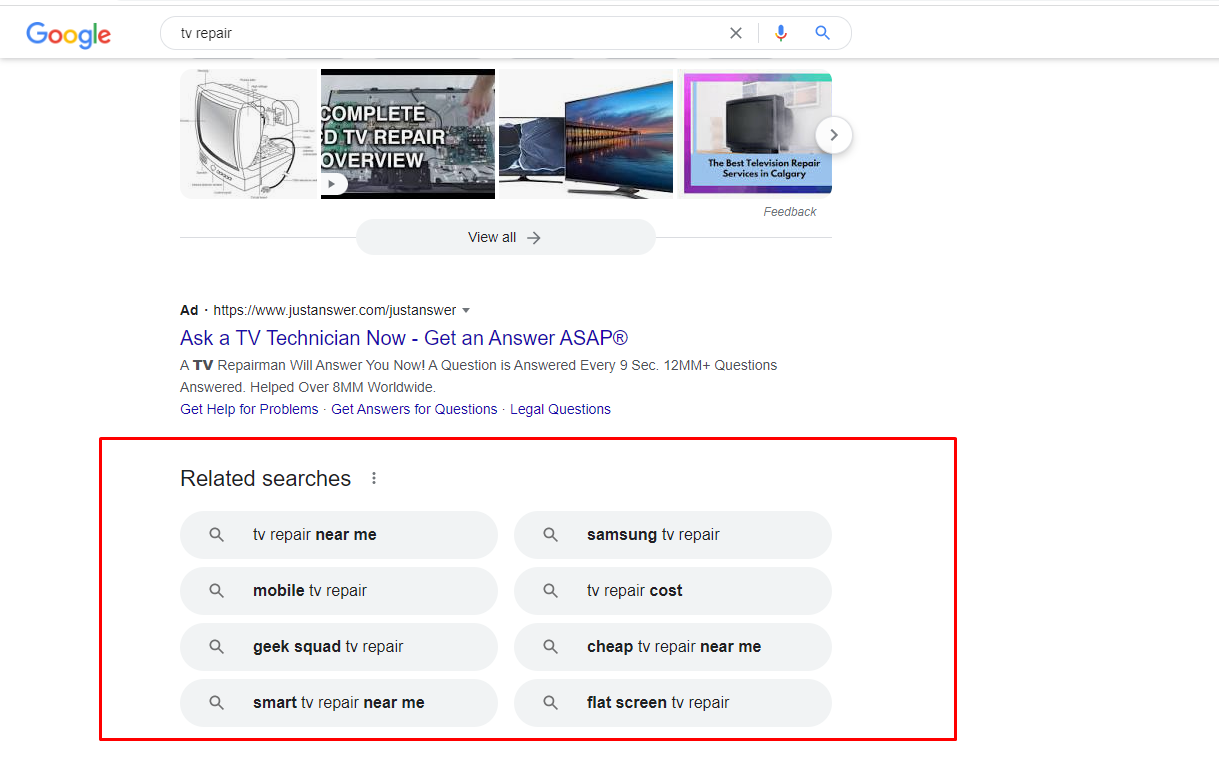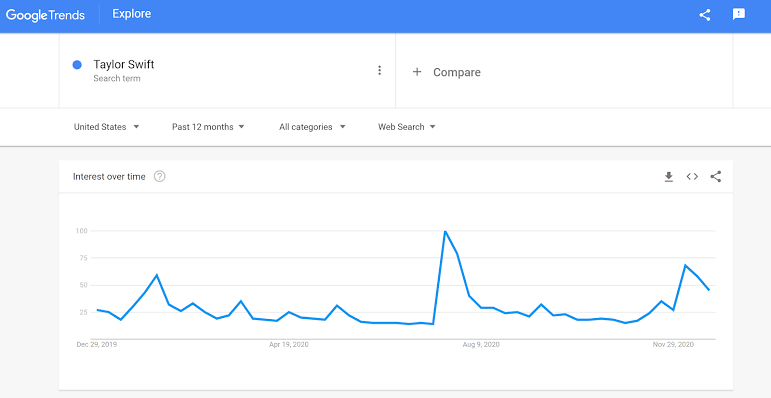
As a website owner, one powerful SEO strategy is to carry out keyword research that provides the most effective keywords that you can use to generate great content with a high conversion rate.
That’s where long-tail keywords come in.
Even though long-tail keywords are super low in popularity and SEO difficulty rating, they are the best for creating content that is specific and targeted to a particular audience.

If you don’t know how to conduct keyword research for long-tail keywords to boost organic rankings, then this is a must-read.
In this article, I’ll be diving deep into the concept of long-tail keywords, why they are important for SEO, and how you can find them.
Therefore, I urge you to read on.
Table of Contents
What Are Long-Tail Keywords?
Long-tail keywords are search queries or terms that have low competition levels and a small search volume per month.
They are usually longer and more specific when compared to the shorter “head” variants.
Long-tail keywords usually have lower keyword difficulty with high conversion rates.
Long-tail keywords contribute to a large majority of all searches on Google, irrespective of the fact that only a small number of users search for long-tail keywords individually.
A study by ahrefs showed that long-tail keywords with less than ten searches each month make up 95 percent of keyword searches in the U.S. keyword database.
Long-Tail Keywords—Why Are They So Named?
Long-tail keywords are so named not based on the number of words they contain but on the monthly search volume compared to the head keyword.
Several one-word keywords exist that have a monthly search volume of less than 100.
Additionally, some five-word keywords exist that get hundreds of thousands of searches per month.
Therefore, what makes a long-tail keyword is not the number of words but the volume of searches it has per month.
Why Are Long-Tail Keywords Important for SEO?
Below are some reasons why you should use long-tail keywords for better SEO rankings.
Lesser Competition
Long-tail keywords are not as competitive as the traditional shorter head keywords, which is why it’s easier to rank with long-tail keywords.
To illustrate this point, if you are doing keyword research for “link building” on Google, there are more than six billion search results on the search engine results pages.
If you aim to take the number one ranking spot, that means your website has to out-compete six billion other websites, which is difficult.
If, however, you change your approach and search for the longer version of the keyword, say “best SEO link building software”, the search result is just above 47 million, which is way less than “link building.”
Additionally, Google Adwords—that is, cost per click—is more expensive with short head terms than long-tail keywords with low popularity.
Greater Conversions
One awesome feature of long-tail keywords is that they are very specific, which is good for high conversion rates.
When internet users search for long-tail keywords on Google, they are usually closer to purchasing the items than those who search for short-head terms.
For instance, consider the keyword “men’s wristwatches”. A user that makes that search on the internet is probably doing random research on wristwatches for men rather than trying to buy one.
However, someone that searches for the longer variant like “men’s watches leather £500” is further down the buying cycle and is more likely to buy the product.
Therefore, long-tail keywords are associated with more conversion traffic than short-head terms.
Contents with Long-Tail Keywords are Easy to Create.
Long-tail keywords are very specific.
For this reason, if you want to create content for your blog and you build it around long-tail keywords, you’ll do less work.
That’s the same reason why content created with long-tail keywords has a lower word count.
On the contrary, head keywords are very broad.
If you generate content using head keywords, you’ll need to provide more details to satisfy visitors.
Therefore, generating blog content using long-tail keywords is less tasking than using head keywords.
Long-Tail Keywords Are Abundant
As I’ve said before, long-tail keywords make up 95 percent of the total keyword searches per month.
That means there are so many long-tail keywords that you can use to generate content for your website and get traffic.
Long-Tail Keywords–The Search Guide
Searching for long-tail keywords to use for your web page content can be difficult.
However, here are some methods to get long-tail keywords with low difficulty ratings:
Google Autosuggest

This tool provides you with long-tail keywords that are rather popular and competitive.
You can use this tool by typing in your target keyword in the Google search bar and adding any alphabet.
Ahrefs’ Keywords Explorer
This tool gives you thousands of unpopular and less competitive long-tail keywords.
It also has a feature where you can see the keyword difficulty score, which is also helpful for getting the least competitive keywords.
Additionally, you can get the long-tail keywords in question form on this tool.
To use this tool, just type any keyword in your niche into the search bar.

You can see several thousands of long-tail keywords by applying the search volume filter.
If your website is new and your brand lacks authority, I highly recommend this tool for finding long-tail keywords to generate content for your web pages.
Use the same Keywords Your Competitors Rank for
A good strategy for getting long-tail keywords with low popularity is to use the ones that your competitors are using to rank.
You can use Ahrefs Site Explorer to examine their content so that you can get their ranking long-tail keywords.
If you use about five to ten websites of your competitors, you can get plenty of long-tail keywords to generate content for your website.
“Searches Related to…”
“Searches related to…” is the last part of Google’s search engine results pages that you usually reach after scrolling down the search results.

This area is good ground to harvest long-tail keywords with high conversion rates.
To use this long-tail keyword research tool, type in the keyword you’d like your content to rank for—say TV repair.
Then scroll to the bottom of the search engine results pages to the section tagged “Related searches for TV repair.”
There you’ll find several long-tail keywords to use for your content.
A pro tip is to type in one of those keywords from that section and search for it on Google. Then scroll down to the “Searches related to…” section for that keyword.
You can repeat this process until you have a rich list of strong long-tail keywords.
Answer The Public

Answer The Public is an effective keyword research platform that provides you with keywords in the form of questions.
To make use of this tool, type in the broad keyword in the search section and select “Get Questions.”
The results that are displayed are the popular questions that searchers ask about that keyword, and they are long-tail keywords.
You can get the results in alphabetical order and download the results in CSV format.
Soovle

This tool is a free keyword research platform that you can use to get long-tail keywords.
Soovle gathers keywords from Google, YouTube, Wikipedia, Amazon, Ask.com, and others.
Therefore, it supplies you with untapped long-tail keywords that you may not find in other keyword research tools.
To use Soovle, visit the platform and search for the target keyword in the search field.
It’ll show you different keywords you can use to develop your content across different platforms.
The download as a CSV file option is also available on Soovle.
People Also Ask for Boxes
People Also Ask Boxes is another great keyword research tool for getting long-tail question keywords.
To use this tool, first search for your broad keyword in the Google search box.
Then proceed to the “People Also Ask…” box down in the search engine results pages.

The suggestions are questions that other Google users have typed that are related to your broad keyword.
Even when you expand any of the suggestions, you’ll see answers to the questions with other questions you can add to your growing list of long-tail keyword questions.
Awesome right?
Google Trends
Google Trends is a great tool for carrying out long-tail keyword research.
This tool helps you to know if the demand for that keyword is falling or growing.
To use this tool, visit Google Trend and type in the long-tail keyword in the search field, which will yield an “interest over time” result that is based on news headlines and search volume.
The result may be a stable trend, an uptrend, or a downtrend, depending on searchers’ interest over time.

A good tip is to look at the “Related Queries” section for other keywords related to the one that you searched for.
Use Quora, Reddit, and Other Niche Forums.
These discussion forums are also a good place to source long-tail keywords with low popularity to develop content on your website.
Internet users frequently visit discussion forums to get answers to questions they don’t find on Google.
Therefore, it is good practice to regularly visit forums for great ideas when doing keyword research.
Questions that people ask on forums and discussion groups get asked on search engines like Google and others.
To use this strategy, go to the forum where you can find your desired audience.
Then check for the titles of the recent threads and adeptly scrutinize the phrases and words members use in the thread.
Conclusion
The benefits of long-tail keywords cannot be overemphasized.
Besides helping you target a specific audience, they also help you generate high conversion rates and boost your overall SEO rankings.
That is why you should use all the keyword research tools above and take your website to the next level–SEO-wise.








